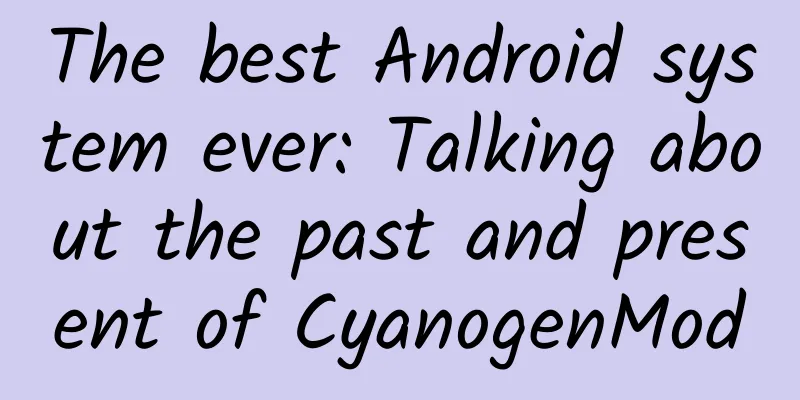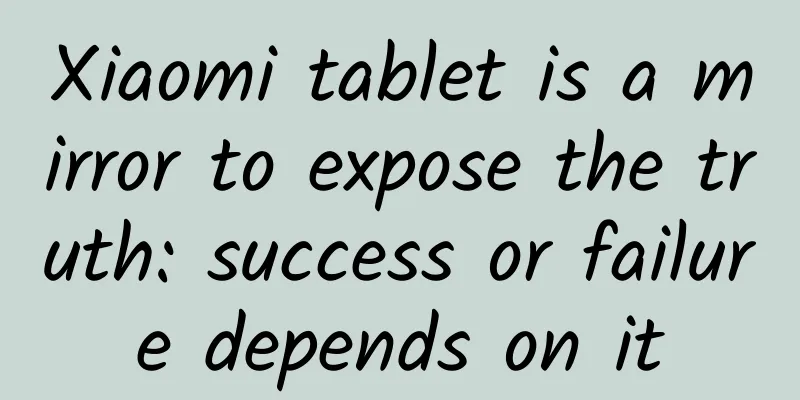The best Android system ever: Talking about the past and present of CyanogenMod

|
At the end of 2016, the well-known third-party Android custom ROM - CyanogenMod officially said goodbye to us, marking the return of CyanogenMod, which has been with generations of enthusiasts, from firmware to a developer community for technical exchanges. Just as we were singing "Ah~ Goodbye, my friend~ Goodbye~ Goodbye~" and waving goodbye, a familiar but unfamiliar face came towards us again. It was Lineage OS created by Steve Kondik, the father of CyanogenMod, and other original core team members. What made CM go through ups and downs and finally achieve its transformation today? Let's review it with the editor. Predecessor: The popular spicy chicken in the primitive era Once upon a time, CyanogenMod was also a brilliant existence. In the Android 2.3 era, many mobile phone manufacturers' customized system functions and interfaces were very simple. They were not only bloated and slow to use, but also had many restrictions. Basically, they were not much different from large feature phones. Due to this embarrassing situation, the needs of some enthusiasts could not be met at all. Many users chose to flash their phones to CyanogenMod 7, which had a higher degree of freedom. At that time, almost every model available internationally on the market could be flashed with the CM system developed by the CyanogenMod team or ported by enthusiasts. Compared with the original system, the CM system could keep up with the pace in system version. In advanced mode, even the CPU frequency could be adjusted. Its super playability made it deeply loved by enthusiasts. These familiar applications are becoming less and less common nowadays The fact that some manufacturers were unable to provide some features at the time also made people more enthusiastic about using the CM system, such as support for FLAC lossless audio format, multi-touch, installation of applications to SD storage cards, compressed cache, multiple APN lists, sharing of WiFi hotspots, and other features that now seem to be standard features, but at that time they also required flashing CyanogenMod to achieve them. At the same time, CM is closer to the native Android system. In the era without background sleep, it is lighter and runs more smoothly than the original system. Some super old models with only 512M RAM can still run the Android 4.0 system smoothly after being transplanted by enthusiasts. The titles of CM occupied a large space in the flashing forum for a period of time. Later generations: all kinds of blockades lead to a dead end Although it experienced a glorious period, CyanogenMod soon fell into decline. First of all, Google, the company behind the Android system, had a feud with CyanogenMod since its inception. As early as 2009, Google sent a lawyer's letter to the CM team asking them not to distribute CyanogenMod anymore because of the built-in Google software framework and related Google apps. After a suspension and coordination, CyanogenMod resumed development, but no longer had built-in Google applications, and users could only install the Google framework themselves. The existence of CM also threatens the implementation of Google's AOSP plan. Under the pressure from large companies, Cyanogen has been unable to find a suitable business model. Without the support of large companies, Cyanogen Inc. seems to be unable to continue in the face of huge expenses for employees, servers, offices, etc. The profit model of pre-installed software is very simple, and Cyanogen, which is well-received but not popular, certainly does not have a bright future. Although Cyanogen Inc. completed two rounds of financing totaling US$155 million in March 2015, and Cyanogen's CEO and co-founder Kirt McMaster declared that "we have put our might on Google's head", the situation of third-party ROMs has become not optimistic. In April, OnePlus announced its breakup with CM and set up its own Hydrogen OS system. In the following period of time, various manufacturers also began to realize that the system should be in their own hands. Nowadays, almost any non-native Android system has very rich and practical functions. Instead of risking bricking, flashing the CM system, the original system is already very convenient. In recent years, the development of smartphones has become more and more popular. Various AI, VR and other functions have been added to the original system. It is not an exaggeration to describe the survival status of third-party mobile phone ROMs as a cold winter. Outlook: Where will Lineage, which has CM blood, go? The death of CM is a foregone conclusion, and there is no way to know how Lineage OS will develop in the future. However, mobile phone manufacturers now make their own mobile phones into devices that organically combine software and hardware. From the configuration to appearance, they are basically built for the system. Using a third-party ROM to separate software and hardware will be counterproductive. Moreover, now each manufacturer's OS has formed its own unique characteristics. In today's world where mobile phone configurations are homogenized, users often choose models based on the systems they run, which is different from the previous situation where users bought phones based on hardware. Therefore, whether anyone will choose a third-party ROM in this case is still an unknown, at least much less than in the heyday of CM. Summarize The era of CM has passed, and the first-party customized system is enough to meet the needs of most users. The tension, anticipation, anxiety and joy of flashing the system have gradually left us with the decline of third-party ROMs, but the adventurous mood and patience of serious research at that time have created an indelible and precious memory. As a winner of Toutiao's Qingyun Plan and Baijiahao's Bai+ Plan, the 2019 Baidu Digital Author of the Year, the Baijiahao's Most Popular Author in the Technology Field, the 2019 Sogou Technology and Culture Author, and the 2021 Baijiahao Quarterly Influential Creator, he has won many awards, including the 2013 Sohu Best Industry Media Person, the 2015 China New Media Entrepreneurship Competition Beijing Third Place, the 2015 Guangmang Experience Award, the 2015 China New Media Entrepreneurship Competition Finals Third Place, and the 2018 Baidu Dynamic Annual Powerful Celebrity. |
<<: Memory/SSD prices are skyrocketing! Will there be no price reduction this year?
>>: Revealing the secrets of Apple’s official iPhone data cable: expensive and poor quality!
Recommend
17 major bonuses of new marketing in 2020!
In 2019, I saw a lot of interesting projects, coo...
Google Maps major upgrade preview: making maps more user-friendly and more understanding of your needs
At the I/O developer conference that opened early...
[Grain Policy of a Great Country] Deep Sea Aquaculture 2.0: Using Technology to Unlock the "New Copy" of the Blue Granary
[Grain Policy of a Great Country] Deep Sea Aquacu...
Be careful! A poison that can kill you with just 1 mg may be in your kitchen!
Fermented foods are loved by people for their uni...
Insurance industry uses Tencent Guangdiantong as an example!
Driven by the improvement of national insurance a...
LG G6 disassembly: Heat pipe cooling suppresses Snapdragon 821
LG officially released its new phone LG G6. LG G6 ...
A complete guide to applying for Android App Market debuts, privileged gift packages, and promotional activities!
If your products have coupons, discount coupons, ...
Which is more important when applying for college entrance examination, school or major? How to choose school and major for college entrance examination?
At present, college entrance examination results ...
How to optimize the promotion account with ROI quadrupled in 3 months and annual turnover of 100 million?
Today's content is about a time when the boss...
Three amazing technical experts I met during my programming career
I have been programming for more than ten years w...
Children play with mobile phones for a long time? Research warns: brain is immature and self-regulation ability is poor
The 7-day Spring Festival holiday has ended. I be...
Wild special effects course: "Photoshop" videos like photoshopping pictures
Wild special effects course: "P" like a...
360 privatization: Returning to A-shares to speculate and raise money or to reconstruct value?
After the war of words between Xiaomi and LeEco a...
Tips for Weibo promotion and traffic generation
Weibo can be said to be a big brother-level platf...
Short video emotional communication project, a way to make money in the niche field
Project Source: The ultimate truth of the world i...









